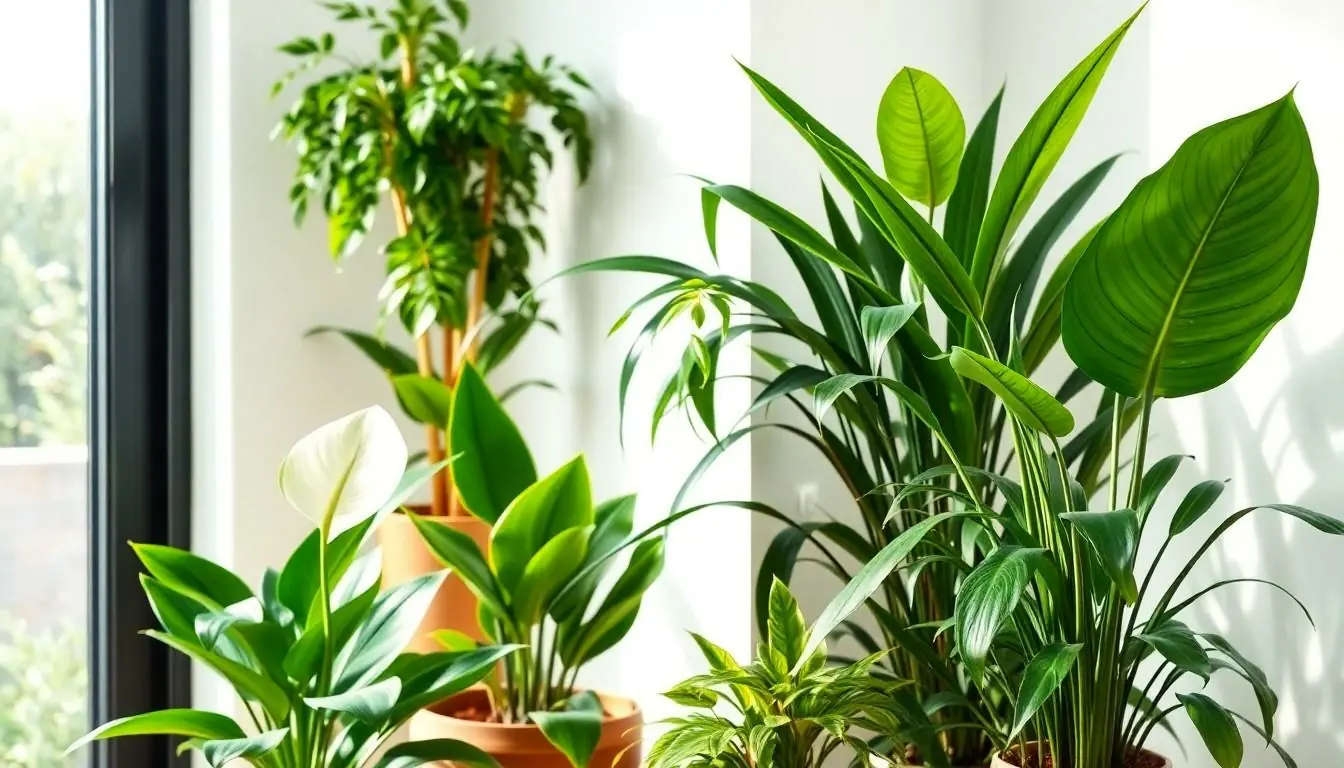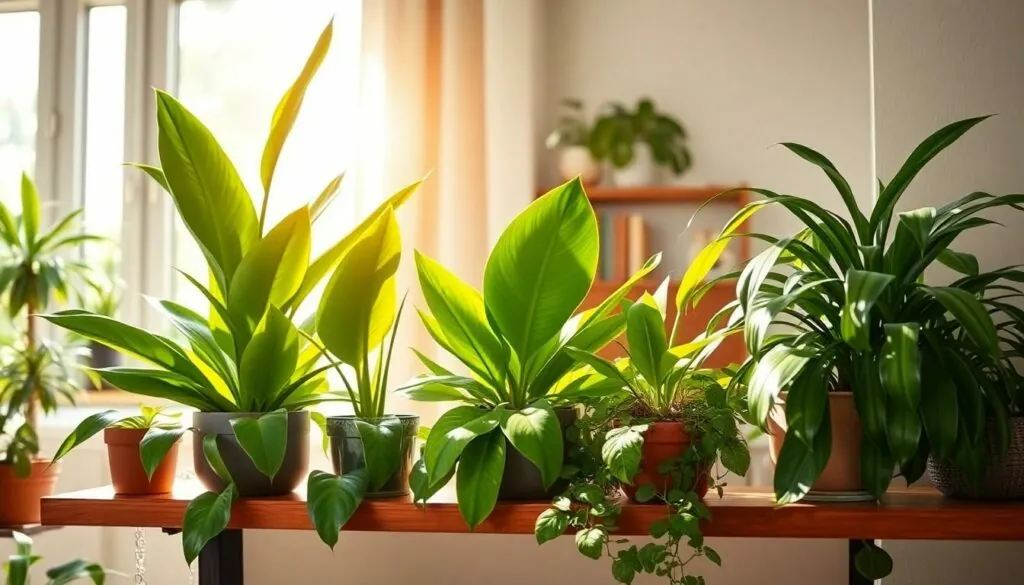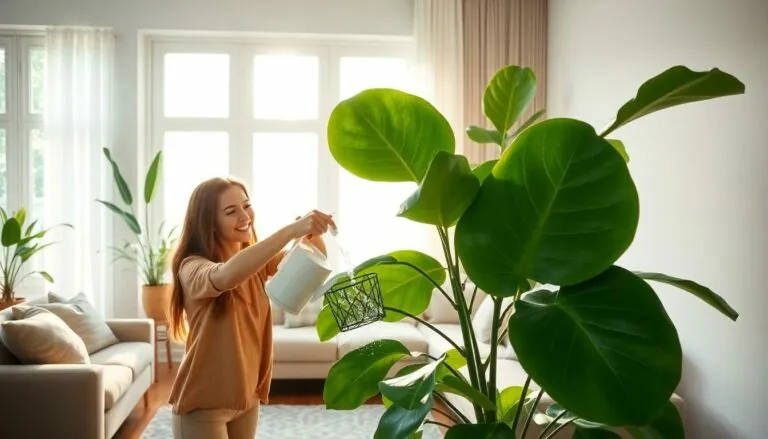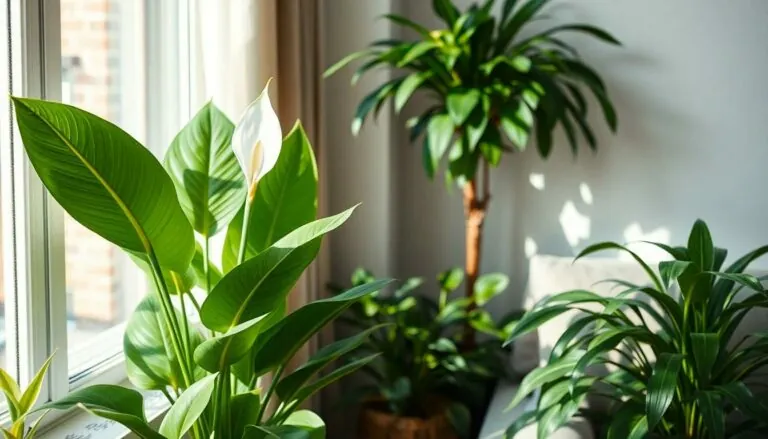Table of Contents
ToggleIn a world where air quality often takes a nosedive, indoor plants are stepping up their game as the unsung heroes of home wellness. Forget the clunky gadgets that hum and buzz in the corner; nature’s own air purifiers are here to save the day. These leafy green companions not only look great but also work tirelessly to filter out toxins, leaving your indoor space fresher than a minty toothpaste commercial.
Overview Of Air Purifier Plants Indoor
Air purifying plants play a crucial role in improving indoor air quality. They possess the ability to filter harmful substances, including formaldehyde, benzene, and other volatile organic compounds. Various studies indicate that certain plants can reduce pollutants by up to 87% within 24 hours.
This natural method of air purification appeals to many homeowners. By incorporating plants such as the Peace Lily, Spider Plant, or Snake Plant, individuals enhance their living spaces’ aesthetic and functional aspects. Research from NASA underscores the effectiveness of these plants, supporting their use in homes and offices alike.
Different plants serve unique functions. For instance, the Peace Lily thrives in low light, making it perfect for indoor environments. In contrast, the Spider Plant is known for its resilience and fast growth, ideal for beginners. The Snake Plant requires minimal maintenance, making it an excellent choice for busy lifestyles.
Adding these plants to an indoor space does more than purify the air. They also promote overall well-being by boosting mood and enhancing focus. Engaging with nature in this manner brings a sense of tranquility, contributing to improved mental health.
Selecting the right plants depends on factors such as light availability and personal care preferences. Many people find joy in learning about plant care while reaping the benefits of cleaner air. Emphasizing these natural solutions can lead to healthier, more vibrant indoor living.
Benefits Of Air Purifier Plants

Air-purifying plants significantly contribute to indoor environments by improving air quality and enhancing aesthetics.
Improved Air Quality
Air-purifying plants filter harmful pollutants from the atmosphere. They effectively remove toxins such as formaldehyde and benzene, ensuring cleaner air. Some studies indicate that certain plants can reduce pollutants by up to 87% within 24 hours. A Peace Lily excels in lowering indoor humidity and significantly improving air quality. Meanwhile, a Snake Plant continuously converts carbon dioxide into oxygen, even at night. These natural filters work continuously, making them an efficient option for enhancing indoor air environments.
Enhanced Aesthetics
Air-purifying plants add visual appeal to indoor spaces. They come in various shapes, sizes, and colors, allowing customization of décor. A Spider Plant thrives in low-light conditions, providing a lush green addition to any room. Ornamental features of these plants complement furniture and other elements within the space. Additionally, incorporating plants into interiors creates a calming atmosphere, positively impacting mental well-being. Overall, the aesthetic value they add enhances both the beauty and comfort of indoor environments.
Popular Air Purifier Plants
Indoor plants effectively enhance air quality. Many have unique air-purifying capabilities alongside aesthetic appeal.
Snake Plant
Known for its air-purifying prowess, the Snake Plant excels in converting carbon dioxide into oxygen, even at night. Low maintenance makes it a favorite among plant enthusiasts. This plant thrives in low light and tolerates drought, providing versatility for various indoor environments. Additionally, research shows it filters harmful substances like formaldehyde, benzene, and xylene. With its tall, sword-like leaves, it adds a modern touch to home décor while actively improving air quality.
Peace Lily
The Peace Lily not only beautifies spaces but also effectively removes indoor pollutants. It effectively filters out toxins such as ammonia, formaldehyde, and benzene. Humidity reduction is one of its unique features, creating a more comfortable living environment. This plant thrives in low light, making it suitable for rooms with minimal sunlight. Additionally, its vibrant white blooms stand out against its lush green leaves, adding a touch of elegance to any room.
Spider Plant
Recognized for its air-purifying abilities, the Spider Plant absorbs carbon monoxide and formaldehyde from the environment. This hardy plant adapts well to various conditions, thriving in indirect sunlight. Known for producing spiderettes, it propagates easily, making it excellent for plant lovers. Enhanced air quality becomes a significant benefit with its growth indoors. The plant’s arching green and white leaves create a lively atmosphere, blending functionality with beauty in home settings.
Tips For Caring For Air Purifier Plants
Caring for air-purifier plants enhances their air-cleansing abilities. Providing the right environment ensures these plants thrive.
Ideal Conditions
Light intensity varies among air purifier plants. The Peace Lily thrives in low to moderate light, while the Snake Plant tolerates low light but prefers indirect sunlight. Temperature plays a key role; keep indoor conditions between 60°F and 80°F for optimal growth. Humidity levels matter as well; most air-purifying plants enjoy humidity levels around 40%-60%. Regularly check soil moisture; allow the top inch to dry out before watering again, preventing root rot. This care routine supports healthy plants and maximizes air purification.
Common Pests And Diseases
Air purifier plants, like any other houseplants, face pest challenges. Spider mites can invade, especially in dry conditions, causing leaf discoloration. Regularly inspect plants for signs of pests, including webs or spots. Fungus gnats often appear in overwatered situations, signaling the need for improved drainage. To manage pests, neem oil or insecticidal soap proves effective without harming the plants. Proper watering practices can help ward off diseases. By maintaining appropriate care, indoor plants stay healthy and continue to purify the air.
Incorporating air-purifying plants into indoor spaces offers a simple yet effective way to enhance air quality and promote well-being. These plants not only filter harmful toxins but also serve as beautiful decor that adds life to any environment. By choosing species like the Peace Lily, Snake Plant, or Spider Plant, individuals can enjoy both aesthetic appeal and health benefits.
With proper care, these plants thrive and contribute to a healthier atmosphere. Whether it’s improving mood or reducing pollutants, air-purifying plants are a smart choice for anyone looking to create a more inviting and fresh indoor space. Embracing these natural solutions can lead to a significant improvement in overall quality of life.






